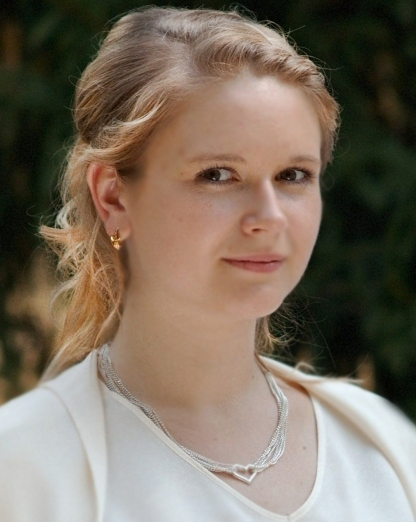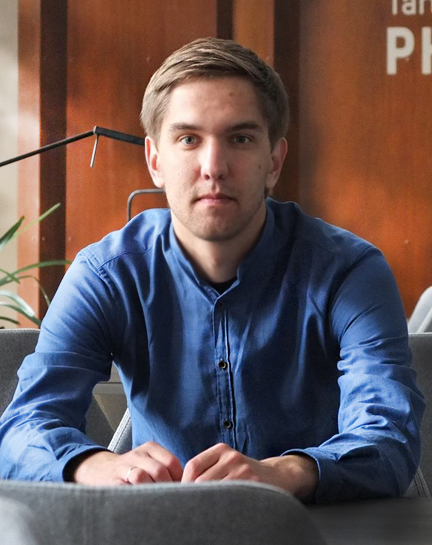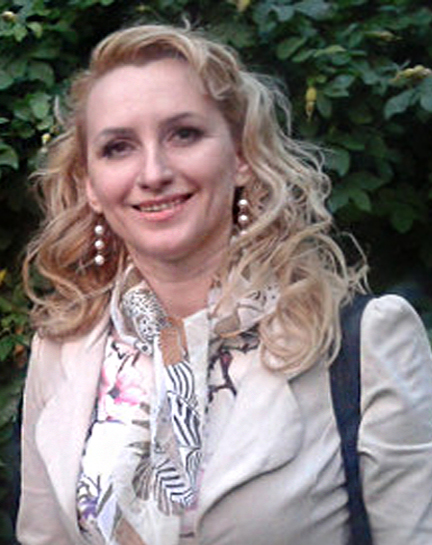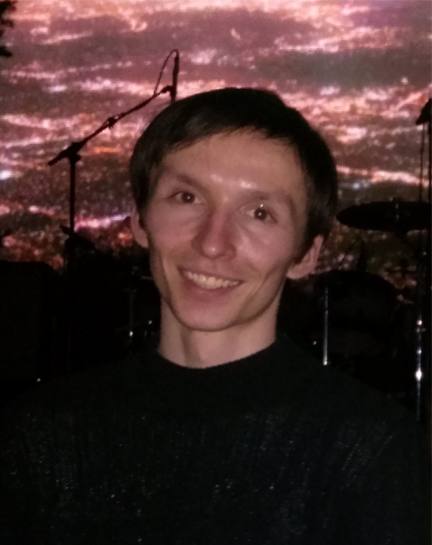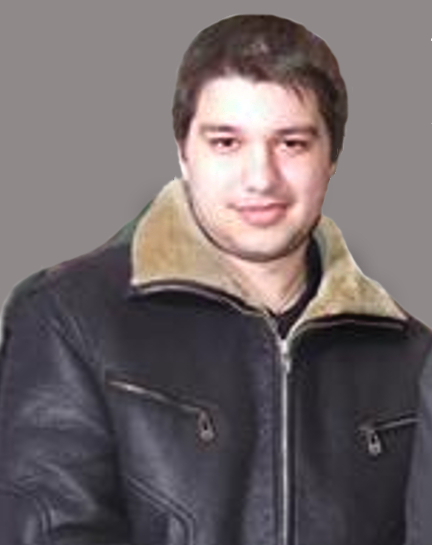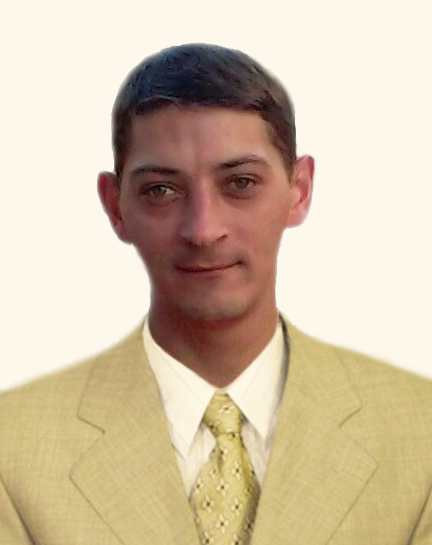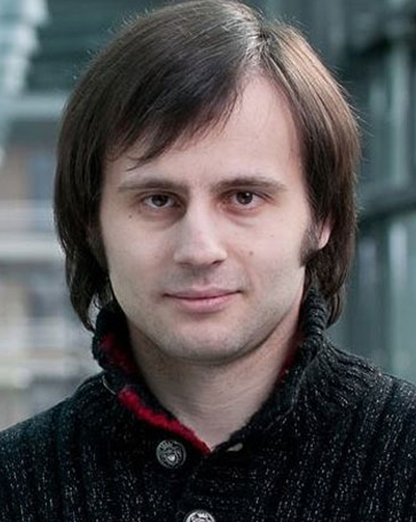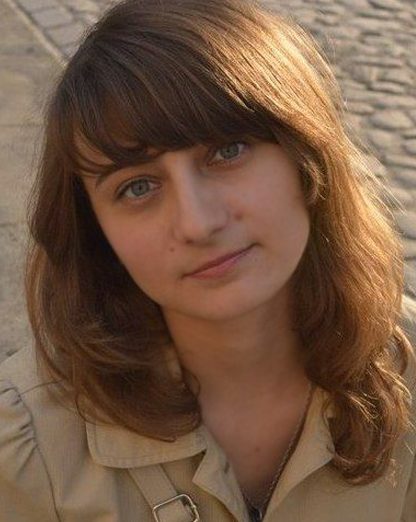4-th International Summer School
"Nanotechnology: from fundamental research to innovations"
was held 19 - 26 August 2017
Migove, Chernivtsi region, Ukraine
NANO-2017 Summer School Abstract book
Dear Colleagues!
We invite you to participate in the 4rd International Summer School “Nanotechnology: from fundamental research to innovations”. Summer school will be held from 19 to 26 of August 2017 in two places: August 19-22 in Migovo and August 23-26 in Chernivtsi.
Participation in the summer school will open the opportunity for young scientists to listen to a series of lectures on the fields of Nanosciences & Nanotechnologies. Scientists of worldwide reputation from universities and research centres from Ukraine and Europe will share their knowledge and experience in the format of lecture presentations and roundtable discussions.
General information
Scientific program
- Nanoobjects microscopy;
- Nanocomposites and nanomaterials;
- Nanostructured surfaces;
- Nanooptics and photonics;
- Nanoplasmonics and surface enhanced spectroscopy;
- Nanochemistry and biotechnology;
- Nanoscale physics;
- Physico-Chemical nanomaterials science.
Important dates
- Registration start - 15.02.2017;
- Registration deadline - 30.04.2017;
- Starting of Abstract submission - 1.05.2017;
- Abstract submission deadline - 30.05.2017;
- Starting of Summer school - 19.08.2017;
- Finishing of Summer school - 26.08.2017.
Summer school schedule
Each working day (19-22 August) will be devoted to two of scientific thematic areas . First half of the day will be dedicated to lectures. It is planned to listen to reports of young scientists and discuss them with lecturers and other participants of the school after lunch.
At August 23-26, 2017 the International Summer School will be combined with 5-th International Conference “Nanotechnologies and Nanomaterials” NANO-2017: plenary session in the morning, oral speeches in the afternoon and poster presentations in the evening.
The main concept of the International summer school is enhancement of scientific skills of young scientists and their acquaintance with scientific achievements in thematic areas of the summer school. Participants of the school (young scientists) are obliged to attend all lectures and presentations of the school (of first and second half of the day) irrespective of the scientific section they are reporting in.
Lecturers and lecture titles
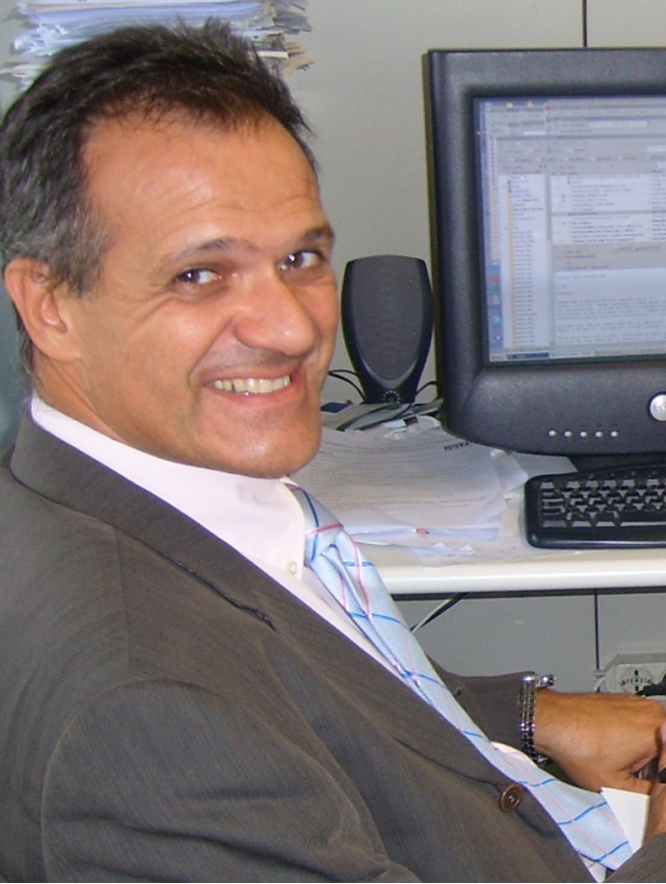
Stefano Bellucci
Position: First researcher
Organisation attended: INFN
Field of interests: Nanotechnology
Work Experience: Dr. Prof. habil. Stefano Bellucci obtained in 1986 his Ph.D. in Physics of elementary particles at SISSA, Trieste. He worked as Research Associate at Brandeis Univ., Waltham, MA, USA (1983-1985); as visiting researcher at M.I.T., Cambridge, MA, USA (1985-1986), at Univ. of Maryland, USA (1986-1987), at Univ. of California at Davis, USA (1987-1988). He was appointed as a Tenured Researcher (Research Staff) at INFN (Istituto Nazionale di Fisica Nucleare) Laboratori Nazionali di Frascati (LNF) in 1987. He was appointed as INFN First Researcher (Senior Research Staff) in 2005. He received by Italy Ministry of University in 2013 the habilitation as Full Professor in Theoretical Physics of Fundamental Interactions and the habilitation as Full Professor in Theoretical Condensed Matter Physics. He coordinated (1999-2002, 2011-2015) all LNF theoretical physics activities.
Title of the lecture: Tunable Microstrip Attenuators and Patch Antenna based on graphene.
Abstract of the lecture: Recently graphene got a lot of attention for its potential use in microwave applications owing to its tunability properties. Graphene changes its resistance values from very high values to very low values upon the application of a voltage bias. This is particularly interesting in the design of microwave and millimeter wave components and structures. The use of few-layer graphene (FLG) is particularly interesting due to its ease of production and low cost. The ease of production and low cost of the graphene flakes however does not affect its tunability properties.
There are several possible topologies for designing tunable attenuators based on FLG flakes. FLG flakes is put in between a microstrip line. The microstrip line is connected to a voltage network analyzer on both its ports. Bias tees are used to bias the FLG flakes from either side. Increasing the bias voltage through the bias tees reduces the graphene resistance thus increasing the transmission through the microstrip line.
Another possible topology for the design of tunable microwave attenuator is by using grounded vias on either side of the microstrip line. These vias symmetrically placed on either side of a microstrip line. The microstrip line and the vias are separated from each other by the help of FLG flakes. When biased, the grounded vias shorts out the microstrip line reducing the transmission through the microstrip line. Such a configuration results in better tunability with a comparatively narrower bandwidth.
FLG flakes can also be used in the design of tunable patch antennas. A patch antenna is connected to a shorted stub on its radiating edge through the FLG flakes. Biasing the FLG flakes reduces their resistance thus increases the impact of the stub on the patch antenna. This results in an elongating effect of the patch antenna thus shifting the radiating frequency. Varying the applied bias voltage results in varying the radiating frequency.
The interesting properties of graphene can be exploited in designing several other kinds of microwave structures ranging from tunable phase shifters to matched load circuits among several others. Thus it has the potentiality of revolutionizing the future of microwave structures.
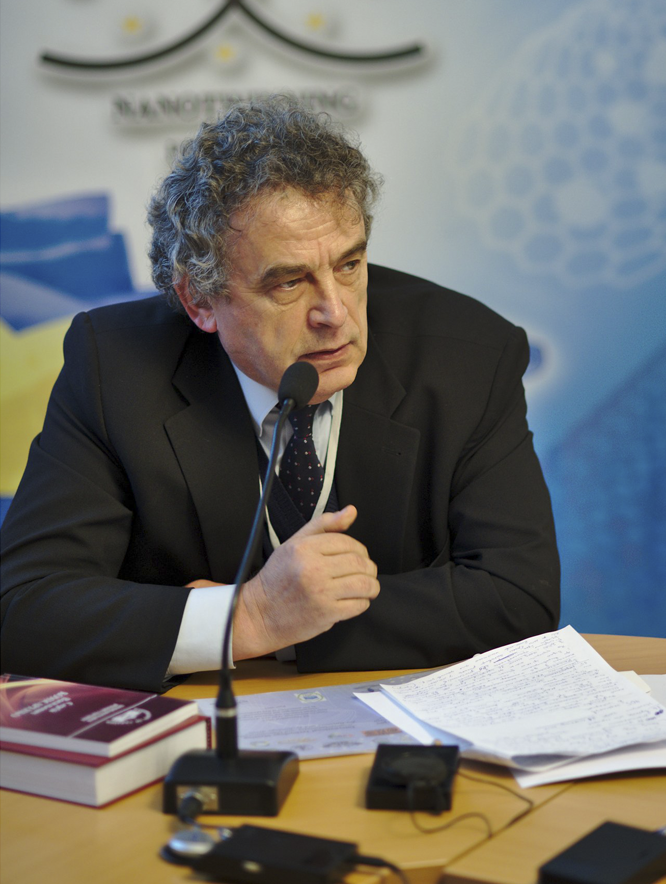
Leonid Yatsenko
Position: Director
Organisation attended: Institute of Physics of the NAS of Ukraine
Field of interests: Quantum optics, nanophysics, laser physics
Work Experience: Research fellow of the Institute of physics of NAS of Ukraine since 1979
Education and Training:
Master’s degree (1976) - Moscow Physical Engineering Institute, Russia, Solid state physics. Thesis: Nonlinear power resonances in ring gas lasers
Ph.D. (1980) - Lebedev Physical Institute, Moscow, Russia. Thesis: The theoretical investigation of macroscopical parameters influence on the characteristics of optical frequency standards
Doctor of Science (1996) - Institute of Physics, Kiev, Ukraine. Thesis: Resonance phenomena in gas lasers
Title of the lecture: Recent progress in optical trapping and manipulation of atomic, nano- and microobjects.
Abstract of the lecture: The history and recent advances in in optical trapping and manipulation of atomic, nano- and micro objects will be presented. A brief introduction to physics of light momentum and history of light pressure will be followed by the general description of light forces on small objects. Special attention will be paid to laser cooling and trapping of atoms molecules. In particular, spontaneous light force, Doppler cooling of a two-level atom, sub-Doppler cooling, stimulated light force, magneto-optical trap, pulsed traps will be discussed. Optical manipulation of larger objects (nano- and microparticles) will be considered on an example of the optical tweezers. Finally, the problems of optical trapping of metallic nanoparticles will be revisited.
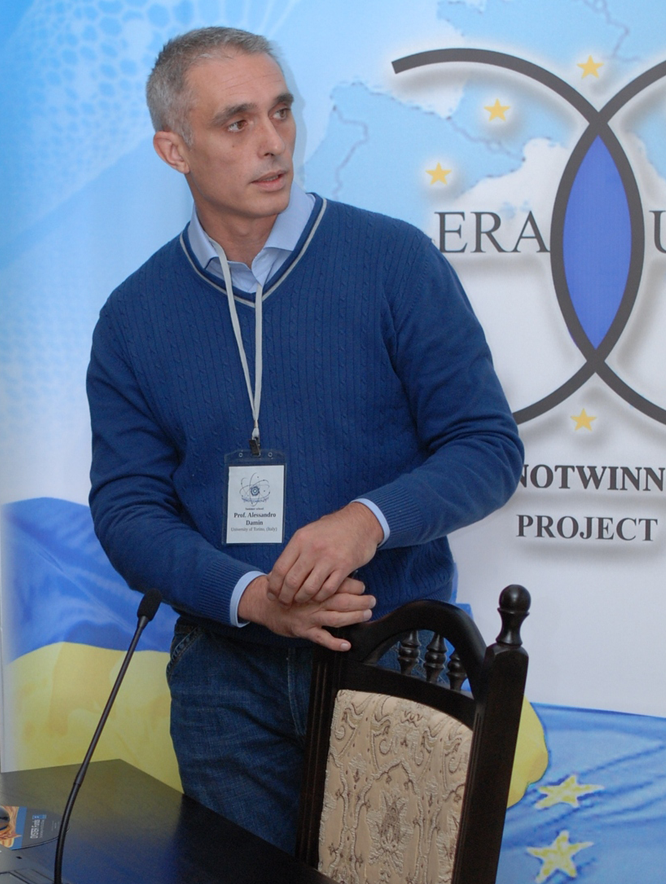
Alessandro Damin
Position: Research Technician
Organisation attended: Dipartimento di Chimica, Università degli Studi di Torino
Field of interests: Raman spectroscopy, SERS substrates synthesis, study of catalytic systems through spectroscopic and computational methods
Work Experience: Alessandro Damin is Research Technician and responsible for the maintenance and developement of Raman Laboratory at Interdipartimental Centre NIS (Nanostructured Interfaces and Surfaces) of Università di Torino. He is involved in developement of methodolgies for Raman measurements of photo-sensible molecules (1 request patent deposited at Ministero dello Sviluppo Economico) and tools (e.g. controlled atmposphere and/or low-temperature cells) for the study of systems interesting in Chemistry Department and NIS Centre (e.g. carbon based functional materials, bio-glassesi, materials interesting for cultural heritage and astro-chemistry, hydrides for H2 storage). Furthermore he is responsible for the synthesis and/or characterization of innovative systems active in SERS (Suface Enhanced Raman Spectroscopy). He is salso involved in the synthesis, developement and characterization of model materials active in the catalysis of several processes (Cr doped glasses for the ethylene polymerization, Ti-doped glasses for the partial oxidation of alkenes, MoS2 for de-suplhurization) and in fotocatalysis (e.g. TiO2 nano-particles embedded in high surface areas glasses), Experimental data, mainly obtained through Raman, FTIR and UV-VIS spectroscopy both in reflectance and transmittance, are also interpreted through the adoption of ab-initio based modeling and the use of several dedicated code (Gaussian, NWchem, CRYSTAL).
Title of the lecture: Gold substrates for SERS: a material scientist point of view.
Abstract of the lecture: SERS (Surface Enhanced Raman Spectroscopy) constitutes nowadays one of the most explored scientific subject, due to its potential application as a high sensitive technique, and with close connection to developments in the field of nanotechnology. In the present work, some of the results on several SERS active gold substrates (obtained in the Raman Lab at NIS Centre in Torino) will be reviewed, giving also some insights on problems occurring when very diluted species are investigated.
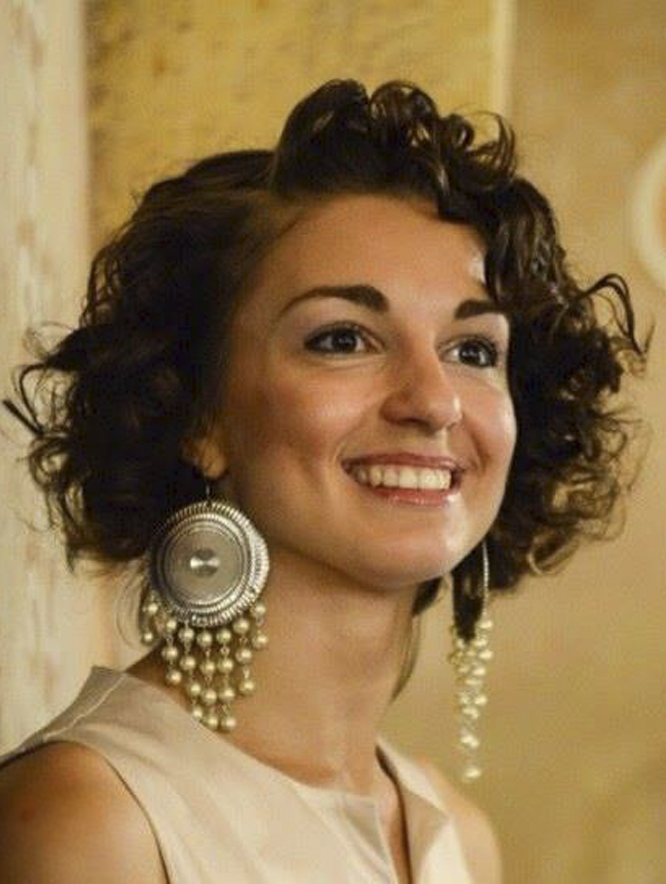
Nataliya Storozhylova
Position: PhD (defending in September 2017)
Organisation attended: University of Santiago de Compostela (Spain)/University of Nantes (France)
Field of interests: Nanotechnology, Pharmacy, Nanomedicine, Glycochemistry and Glycobiology
Work Experience:
PhD student (within the framework of international doctoral program NanoFar supported by Erasmus Mundus) - Main activities and responsibilities Galectin-3 inhibitors development and synthesis (France); Development of in situ hydrogels for controlled drug release for rheumatoid arthritis treatment (Spain);Anti-inflammatory drugs testing in vivo (Germany).
Research assistant at the department of Protein Structure and Function - Preparation of lab-on-chip systems, biochemical analysis, and project management. A translator.
Education and Training:
Master degree in Chemistry (Membrane and Sorption Process and Technologies) - “A Methodology Development of Preparation of Immunobiosensor Chips Using Self-assembled Monolayers Technology for Blood Plasma Proteins Quantification”. Defended the thesis with the "excellent" grade.
Title of the lecture: New potential nanotechnology-based therapies for the treatment of rheumatoid arthritis.
Abstract of the lecture: The design, development and in vivo evaluation of a novel injectable biodegradable drug delivery system, composed of in situ hydrogel combined with nanocapsules carrying lipophilic anti-inflammatory drugs, for prolonged intra-articular residence time and controlled drug release.
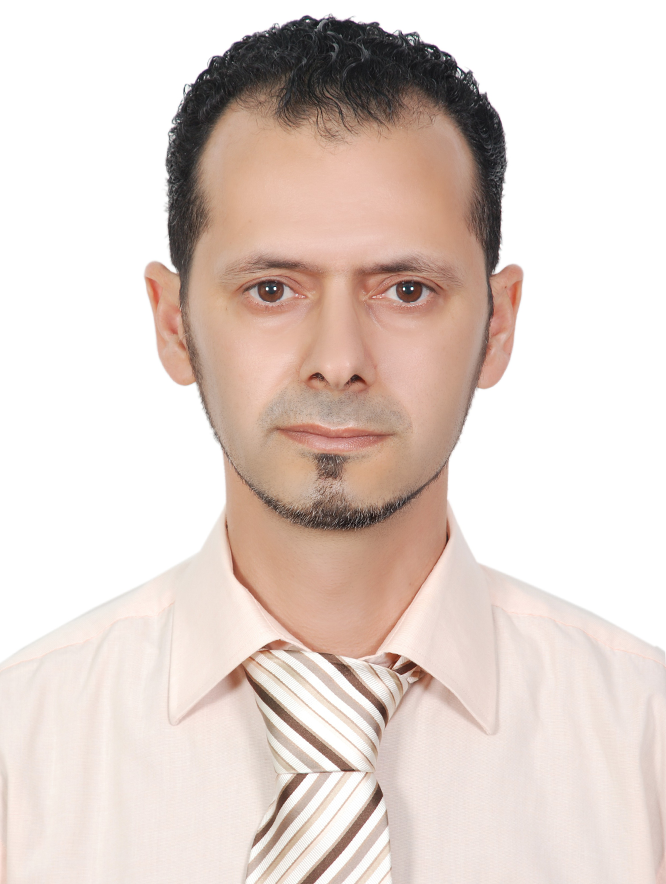
Mohamed Bououdina
Position: Manger of Central Labs
Organisation attended: University of Bahrain
Field of interests: Nanotechnology, Materials Science, Energy
Work Experience:
2010 – 2015: Director of the Nanotechnology Centre, University of Bahrain, Kingdom of Bahrain
2006 – Present: Assistant Professor: Department of Physics, College of Science, University of Bahrain, Kingdom of Bahrain.
2005 – 2006: Assistant Professor: Department of Physics, College of Science, King Khalid University, Abha, Kingdom of Saudi Arabia.
2002 - 2005: Research Fellow: Department of Materials, School M3, University of Nottingham, UK.
1998 - 2002: Research Fellow, Department of Materials, Queen Mary University of London, UK.
1996 - 1998: Research Scientist, National Institute of Materials and Chemical Research, Tsukuba, Japan.
Education and Training:
Degree: Ph.D. (Honor) in Solid State Physics, University Joseph Fourier (UJF), Grenoble, France, 1995
Achievements: Over 24 Invited/Plenary Talk, 260 Papers in ISI Journals; 2 Books (indexed by Scopus, IET, etc) and 20 Book Chapters; Editor (20) and regular Reviewer (35) for international journals, etc.
Title of the lecture: Micro-/Nano-Structured Materials for H2 Energy.
Abstract of the lecture: Renewable, clean and sustainable energies are of great importance for the modern society. Extensive research, funding and policies are devoted toward the development and implementation of such energies. Hydrogen has been identified as a very promising energy carrier, as it can be stored as gas, liquid and solid namely metal hydrides.
Both structural (phase transformation, substitution, interstitial, doping) microstructural (composites, particles/grains size reduction, defects, imperfections) modifications introduce important changes into material’s properties.
Furthermore, materials at the nanoscale offer diverse tuneable properties as a function of their shape/size due to high surface area and quantum confinement. Thereby, nanostructured materials exhibit enhanced properties compared to bulk counterparts in terms of high-density reversible H2, faster kinetics, reduced desorption/absorption temperature and better cycling.
In this paper, selected micro- and nano-/structured materials will be presented including mainly: (i) composites where the kinetic can be improved by the precipitation of secondary phase; (ii) MgH2/based nanocomposites; (iii) effect of catalysts (Fe2O3 and NiO) on the formation of carbon nanostructures and their H2 proprieties and (iv) Lithium reactivity with metal hydrides (i.e. NiTi) for a new generation of Li-MH rechargeable batteries. Density functional theory (DFT) calculations will be presented to discuss the electronic structure, enthalpy for the stability of alloys/hydrides, etc.
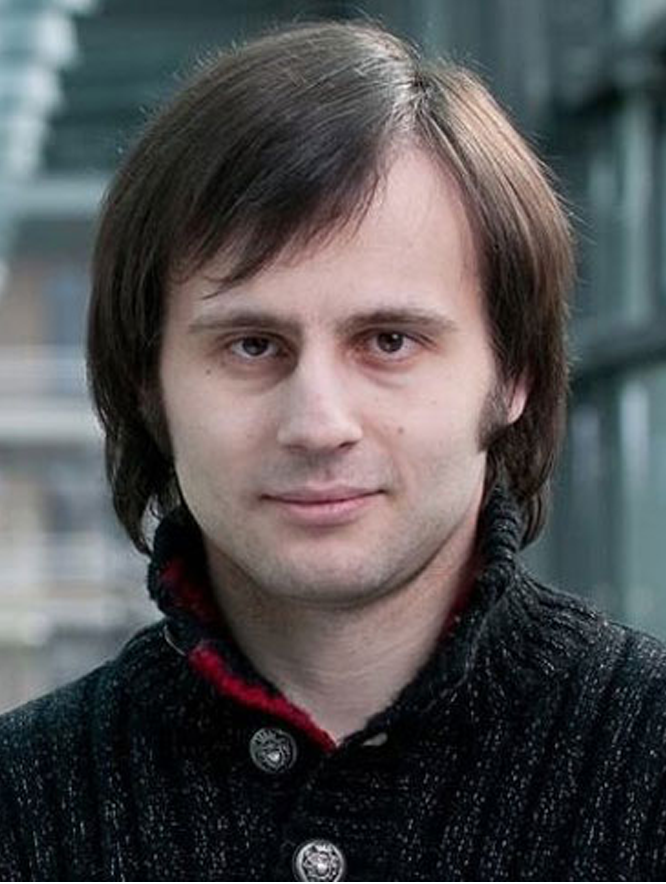
Yuriy Khalavka
Position: Ass.proffesor
Organisation attended: Department of Solid State Inorganic Chemistry and Nanomaterials of Yuriy Fedkovych Chernivtsi National University
Field of interests: Nanochemistry, quantum dots, metal and semiconductor hybrid nanomaterials
Work Experience:
Since 2010 – Lecturer and researcher at Yuriy Fedkovych Chernivtsi National University
2006-2007 – Scientist at the University of Mainz (Germany)
Education and Training:
PhD in Solid State Chemistry – 2010.
2000 – 2005 – master of Chemistry, Yuriy Fedkovych Chernivtsi National University
Title of the lecture: Tuning the quantum dots optical properties.
Abstract of the lecture: Semiconductor quantum dots (QDs) with the emission in the near infrared region attract interest due to their potential applications as biomarkers for in vivo imaging, solar cells, telecommunication etc. For all of such applications it is important to control and to understand the effects of impurities on the band structure of nanoparticles.
On the other side blue-emitting quantum dots are desirable for down-conversion of the UV-light, sensing and lasing systems.
Doping of the nanoparticles is a versatile tool to extend optical properties for conventional materials. I will cove different aspects of nanoparticle doping and its influence on their luminescent properties.
The size dependence of the temperature coefficient (sensitivity) of the photoluminescence (PL) peak position of CdTe quantum dots will also be discussed. Temperature sensitivity increases as the average radius of CdTe quantum dots decraeases. This must be taken into account in the design of solar light concentrators and light-emmiting diode-monitors as well as other technologies in which a fine tuning of the light emission is important.
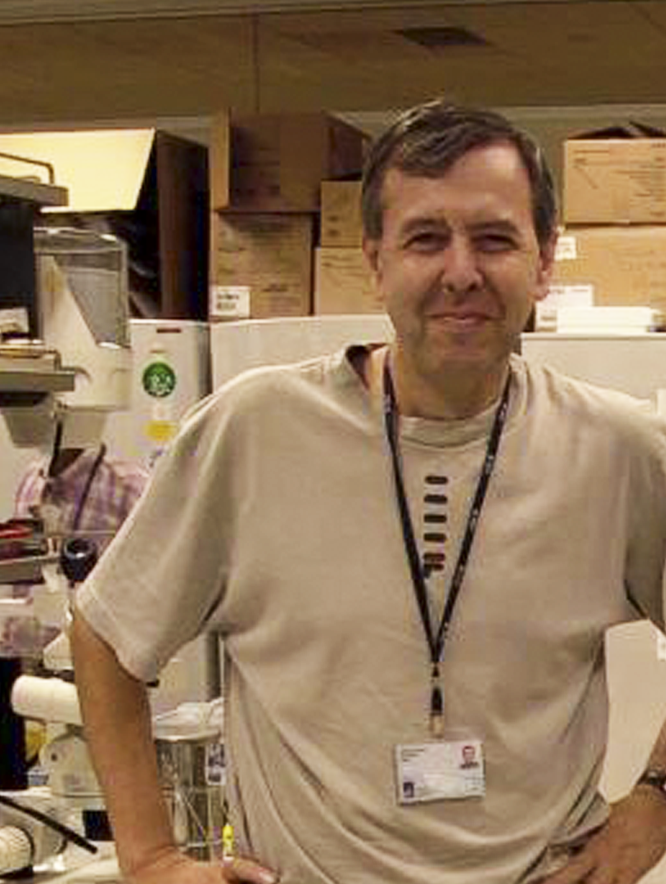
Vladimir Korzh
Position: Visiting professor
Organisation attended: International Institute of Molecular and Cell Biology
Field of interests: Developmental biology, zebrafish, embryo toxicity, FCS, natomaterials
Work Experience:
After graduating from Kiev University in 1976, Vladimir Korzh got his PhD in developmental biology in 1981 at the Koltsov Institute of Developmental Biology in Moscow. He worked as a researcher in the same institute until 1990 when he moved as a postdoc to the University of Tromsø, Norway and started using zebrafish as a model of vertebrate neurodevelopment. Later, he moved to the University of Umeä, Sweden and in 1995 started a laboratory of fish developmental biology at the ex-Institute of Molecular Agrobiology in Singapore before joining the IMCB in 2002. He is an Associate Professor.
Education and Training:
1976 - BSc, Dep. Biol. Sciences, Kiev State University
1981 - PhD, Koltsov Institute of Developmental Biology, USSR Academy of Sciences.
Title of the lecture: Zebrafish as useful in vivo model for nanomaterials embryotoxicity and disease treatment.
Abstract of the lecture: Since relatively recently zebrafish embryos started to be used to evaluate embryotoxicity and various physicochemical properties of nanomaterials. This made it a popular non-mammalian research model animal. While it is relatively easy to work with zebrafish some training is necessary to be able to set experiments correctly and put forward proper scientific questions. Zebrafish researchers usually highlight advantages of zebrafish embryos as a model system. But what about their disadvantages? This lecture will cover various aspects of developmental biology of zebrafish and highlight its applications in analysis of nanomaterials.
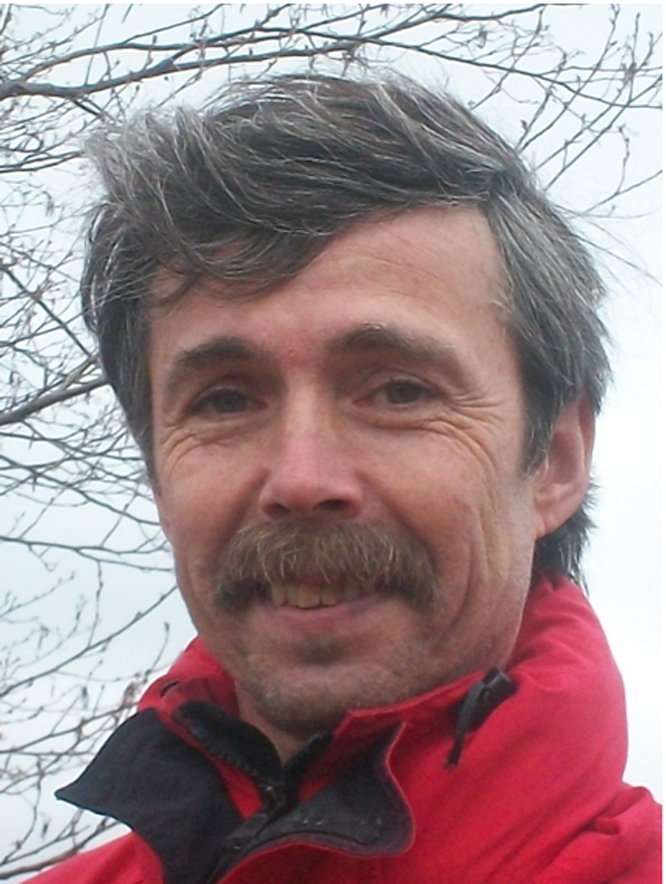
Eugene Bortchagovsky
Position: Head of a laboratory, senior scientist
Organisation attended: Institute of Semiconductor Physics of the NAS of Ukraine
Field of interests: Plasmonics, near-field optics, energy transfer, ellipsometry of nanostructures
Work Experience:
Expertise in ellipsometry, near-field optics. tip-enhanced Raman scattering.
Employment – V.Lashkarev Institute of Semiconductor Physics of NAS of Ukraine;
Contracts: Masaryk University (Brno, Czech Republic); Institute of Physics of CZ AV (Prague, Czech Republic); Westfälische-Wilhelms Universität (Münster, Germany); Istituto per la Microelectronica e Microsistemi CNR (Lecce, Italy); Quinsland University of Technology (Brisbane, Australia); Johannes Kepler University (Linz, Austria); ETH (Zurich, Switzerland); echnical University (Chemnitz, Germany)
Education and Training:
2016 – Dr. of Sciences in Physics, Institute of Physics of NAS of Ukraine;
1991 – PhD, Moscow State University;
1982 – MSc., Moscow Institute of Physics and Technology.
Title of the lecture: Ellipsometry of nanostructures on a surface.
Abstract of the lecture: Ellipsometrc investigations of nanostructures on a surface have peculiarities created by two-dimensional character of such a structures. As the result, interactions along and across the surface are different producing effective optical anisotropy of such a structures. The situation is even more complicated because of the interaction of nanoobjects with the surface. These reasons do not allow to apply Lorentz sphere formalism for the fields averaging in heterogeneous nanostructure producing deviation of optical properties of such a structures from results given by standard 3D models of effective-medium approximation. These problems will be discussed and examples of ellipsometric investigations of both random and ordered nanostructures on surfaces will be presented. It is shown that polarization properties of light can give macroscopic information about microscopic interparticle interactions as well as ellipsometry allows to monitor behavior of modes localized on the layer of nanostructures and to register interactions of such a modes.
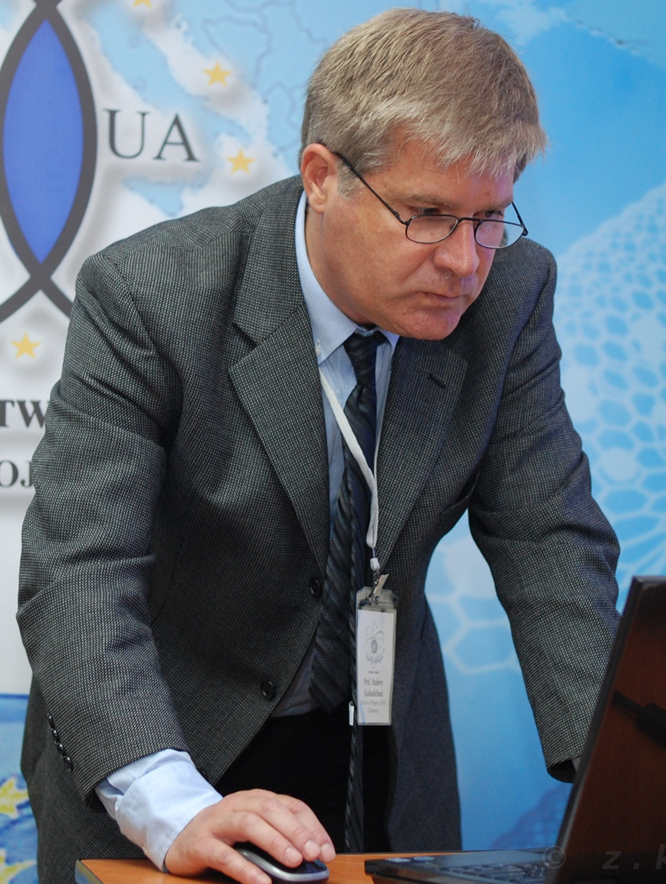
Andrey Kadashchuk
Position: Senior Scientist, Guest professor
Organisation attended: Institute of Physics, NAS of Ukraine, Kiev, Ukraine; IMEC International, Department of Large-Area Electronics, Leuven, Belgium
Field of interests: Eelectronic properties of thin-film organic and oxide semiconductor materials, organic semiconducting nanostructures and their applications as active media in FET, PV, and LED devices. Thin-film flexible electronics
Work Experience:
Study and modeling of the charge-carrier transport and trapping in organic optoelectronic device materials and nanostructures, as well as in thin-film amorphous oxide semiconductors.
Gaining insight into excited states physics and exciton processes/migration, the charge-carrier trapping phenomena in semiconducting polymers, low molecular weight organic films and organic nanostructures.
Physics of thin-film flexible electronic devices
Education and Training:
MS in Physics, Graduated from the Department of Physics of Kiev State University in 1984.
Ph.D. in Physics, Institute of Physics, National Academy of Sciences of Ukraine, 1989.
Post.Doc. fellowships at TU-Darmstadt, Germany (2003-2004) and at IMEC, Belgium (2005-2006).
Title of the lecture: Modern trends in nanoelectronics and ultra-thin-film flexible electronics.
Abstract of the lecture: Integrated circuits (called also as “microchips”) are at the heart of modern electronic devices (computers, smartphones, different electronic household appliances, etc.), which have nowadays penetrated every aspect of our lives. Downscaling is the dominant trend in microelectronics for more than 50 years, which implies creation of increasingly smaller constituting elements - transistors. The number of transistors in microchips doubles approximately every two years. This is a key to make electronic devices increasingly faster, cheaper and energy more efficient. The most advanced commercial microchips consist of several billions of tiny transistors with extremely small feature size of 10 nm as achieved now for processors and 7 nm for memories. This remarkable achievement truly means a transition from microelectronics to nanoelectronics and presents the widest practical realization of nanotechnologies as for today. In this lecture, I will present an overview of modern trends in nanoelectronics technology, relevant physical aspects as well as some corresponding innovations with particular focus on the Internet-of-Things (IoT) – a new increasingly growing topic. Furthermore, a new generation of electronics – the so-called thin-film flexible electronics will also be discussed in details including its impact on IoT implementation perspective.
Results of the competition
The selection of 30 participants of the Summer School was made by 10 experts from Ukraine and the world, namely: Prof. Yatsenko Leonid (Institute of physics of NASU, Ukraine), Prof. Klaus Pedaring (Johannes Kepler University, Austria), Prof., Dr.Andreas Otto(Germany), Prof. Marta Gianmario (University of Torino, Department of Chemistry, Italy), Dr. Leonid Dolgov (Institute of Physics, University of Tartu, Estonia; Sun Yat Sen University, PR China), Dr. Fesenko Olena (Institute of physics of NASU, Ukraine), Dr, Ass. Prof. Yuriy Khalavka (Department of Solid State Inorganic Chemistry and Nanomaterials Yuriy Fedkovych Chernivtsi National University, Ukraine), Dr. Galyna Okrepka (Yuriy Fedkovych Chernivtsi National University, Ukraine), Dr.Prof. Larysa Shcherbak (Yuriy Fedkovych Chernivtsi National University, Ukraine), Dr., Ass. Prof Yulia Seti (Yuriy Fedkovych Chernivtsi National University, Ukraine).
| № | Participant | Country | Institution | Score | Abstract |
|---|---|---|---|---|---|
| 1 | Ewa Czechowska | Poland | "Department of Materials Technology and Chemistry, Faculty of Chemistry, University of Lodz Department of Materials Technology and Chemistry, Faculty of Chemistry, University of Lodz Department of Materials Technology and Chemistry, Faculty of Chemistry, University of Lodz" | 9 | Investigation of catalase activity adsorbed on the gold nanoparticles surface |
| 2 | Sonya Kosar | Ukraine | "Institute of Physics, Engineering and Computer Science, Chernivtsy National University" | 9 | Highly efficient photocatalytic conversion of solar energy to hydrogen by core-shell heterojunction nanorods |
| 3 | Oleksandr Hreshchuk | Ukraine | V. Lashkaryov Institute of Semiconductor Physics, NAS of Ukraine | 9 | Experiment and modeling of “star-like” plasmonic nanostructures for SERS application |
| 4 | Emilia Tomaszewska | Poland | "Department of Materials Technology and Chemistry, Faculty of Chemistry, University of Lodz" | 8 | Conjugates of silver nanoparticles and plant extracts for dermal applications |
| 5 | Joanna Ginter | Poland | "Department of Materials Technology and Chemistry, Faculty of Chemistry, University of Lodz" | 8 | "The influence of the synthesis conditions on the optical and photocatalytic properties of TiO2 photonic crystals" |
| 6 | Volodymyr Multian | Ukraine | Institute of Physics of the NAS of Ukraine | 8 | Third-order nonlinear susceptibility of ZnO nanoparticles using third-harmonic generation at interfaces |
| 7 | Egor Kaniukov | Belarus | Scientific-Practical Materials Research Centre NAS of Belarus | 8 | Single molecule detection using silver dendrites in pores of SiO2 template |
| 8 | Amadeusz Laszcz | Poland | Department of Mechanics, Materials Science and Engineering, Wroclaw University of Science and Technology | 8 | Instrumented Nanoindentation as a Method for Mapping of Properties of Multi-phase Gd-doped Ferromagnetic Shape Memory Alloy |
| 9 | Mariia Yakhnevych | Ukraine | Chernivtsi National University | 8 | Effect of electric field and position of impurity on energy spectrum of electron and its location in multilayered quantum |
| 10 | Bartosz Wilk | Poland | Silesian Center for Education and Interdisciplinary Research, University of Silesia | 8 | XPS and AFM studies of impact of the surface oxidation on the properties of Bi2Te3 thin films |
| 11 | Ewelina Mackievicz | Poland | "Department of Materials Technology and Chemistry, Faculty of Chemistry, University of Lodz" | 7 | Nanosilver surface modification for biological properties formation |
| 12 | Svitlana Sovinska | Poland | Faculty of Chemical Engineering and Technology, Cracow University of Technology | 7 | Synthesis and characterization of ZnSe and ZnSe:Ag nanowires for photovoltaic application |
| 13 | Kaja Spilarewicz-Stanek | Poland | Department of Materials Technology and Chemistry, Faculty of Chemistry, University of Lodz | 7 | Characterization of graphene oxide reduction methods |
| 14 | Yaroslav Shpotyuk | Poland | "Center for Innovation and Transfer of Natural Sciences and Engineering Knowledge, Faculty of Mathematics and Natural Scienes, University of Rzeszow" | 7 | Effect of Ga on the nanostructure of As-Se-based glasses |
| 15 | Liubov Matkovska | France | Université de Lyon, Université Lyon 1, Ingénierie des Matériaux Polymères | 6 | Structural peculiarities of ion-conductive organic-inorganic polymer composites |
| 16 | Olga Porohnya | Ukraine | Department of polymer physic, Institute of Macromolecular Chemistry of the NAS of Ukraine | 6 | "Resistive ethanol vapor sensors based on polyethylene glycol/carbon nanotubes composites" |
| 17 | Liubov Revutska | Ukraine | National Technical University of Ukraine “KPI” | 6 | Nanostructured GeAsSe chalcogenide glasses: Raman spectroscopy studies |
| 18 | Dmytro Yaremkevych | Ukraine | Institute of Magnetism of the NAS of Ukraine | 6 | Spin-dependent scattering in Co/Ni-Cu multilayers under magnetic proximity effect |
| 19 | Katarzyna Lenczewska | Poland | "Department of Spectroscopy of Excited States, Institute of Low Temperature and Structure Research, Polish Academy of Sciences" | 6 | Energy transfer and near infrared emission in GdVO4:Bi3+, Ln3+ (Ln=Nd3+ and Yb3+) nanophosphors |
| 20 | Maryna Lazorenko | Ukraine | "Dept.of Metallic State Theory, G.V.Kurdyumov Institute for Metal Physics of NASU" | 6 | "Influenced electronic states in doped graphene: external magnetic field vs. impurity configurations" |
| 21 | Oleksii Liubchenko | Ukraine | Lashkaryov Institute of semiconductor physics, Natl. Acad. of Sci. of Ukraine | 6 | XRD investigation of structural transformations in InSb induced by ion implantation |
| 22 | Vitaly Uvarov | Ukraine | Donetsk Institute for Physics and Engineering named after O.O. Galkin , NAS of Ukraine | 6 | "Structure and morphology study of carbon nitride nanostructured films under nanosecond laser pulses" |
| 23 | Marcin Piotrowski | Poland | Faculty of Chemical Engineering and Technology, Cracow University of Technology | 6 | BEA zeolite design for lactic acid dehydration |
| 24 | Ivan Babichuk | Ukraine | V.Ye. Lashkaryov Institute of Semiconductor Physics of the National Academy of Sciences of Ukraine | 6 | Influence of pressure changes during sulfurization on formation of thin film Cu2ZnSnS4 solar cell absorber |
| 25 | Anna Mazur | Poland | "Faculty of Chemistry, Department of Advanced Material Technologies, Wrocław University of Science and Technology," | 5 | Corrosion resistance of ZrO2 ceramic layers deposited by the sol-gel method on 316L stainless steel in SBF |
| 26 | Pavlo Golub | Ukraine | Institute of Physics of the NAS of Ukraine | 5 | Light-induced LC director freezing on a chalcohenide surface |
| 27 | Anastasiia Tomchuk | Ukraine | Department of Physics, Taras Shevchenko National University of Kyiv | 5 | "Influence of Dielectric Film Thickness on the Surface Plasmon Resonance in the System “Au NPs Monolayer –Dielectric Spacer – Al Film”" |
| 28 | Siim Heinsalu | Estonia | Institute of Physics, University of Tartu | 5 | Raman scattering from organic molecules deposited on the noble metal nanoparticles and graphene |
| 29 | Roman Rudenko | Ukraine | Institute of Physics, National Academy of Sciences of Ukraine | 4 | Electrical conductivity of PANI-PVDF-MWCNT nanocomposites |
| 30 | Jeetendra Bhawsar | India | Department of Chemistry, Medi-Caps University | 4 | Corrosion Inhibition Efficiency of Green Synthesised Silver Nano Particles in Acidic Medium |
| 31 | Evgenij Leonenko | Ukraine | L.V. Pisarzhevsky Institute of Physical Chemistry of the NAS of Ukraine | 4 | Nanostructured 2D hybrids for photovoltaic and lasing devices manufactured by sol-gel methods |
| 32 | Iryna Naiko | Ukraine | Institute of Physics of the NAS of Ukraine | 4 | Obtaining a homogeneous nanosize film with using an erosive plasma source |
| 33 | Razet Basnukaeva | Ukraine | B. Verkin Institute for Low Temperature Physics and Engineering of the NAS of Ukraine | 4 | "Isotopic effect in thermal expansion of organic superconductor κ-(D4-BEDT-TTF)2Cu[N(CN)2]Br" |
| 34 | Anna Szczurek | Poland | "Department of Mechanics, Materials Science and Engineering, Wroclaw University of Science and Technology" | 4 | Adhesion and scratch resistance of sol-gel thin films on polymeric substrate |
| 35 | Kira Kalinichenko | Ukraine | Colloidal Technologies of the Natural Systems Department, F.D. Ovcharenko Institute of Biocolloidal Chemistry of the NAS of Ukraine | 4 | On the nature of the liquid phase of the metal-containing nanocomposite |
| 36 | Vasyl Baliha | Ukraine | Institute for Condensed Matter Physics, National Academy of Sciences of Ukraine | 4 | Unconventional phase transitions in a flat-band quantum Heisenberg antiferromagnet |
| 37 | Roman Kolisnyk | Ukraine | The Paton Electric Welding Institute of the National Academy of Sciences of Ukraine | 4 | Novel heating element based on polymer nanocomposites for resistance welding of plastics |
| 38 | Natalia Sobus | Poland | "Faculty of Chemical Engineering and Technology, Cracow University of Technology" | 4 | BEA zeolite design for lactic acid dehydration |
| 39 | Daryna Pesina | Ukraine | ological Physics Department, O. Ya.Usikov Institute for Radiophysics and Electronics NAS of Ukraine | 4 | Stabilization of magnetite nanoparticles by sodium citrate |
| 40 | Viktor Borysiuk | Ukraine | Taras Shevchenko National University of Kyiv | 4 | Investigation of XO42- (X = Cr, Mo, W) molecular oxyanions adsorption on surface of carbon nanostructures in aqueous solution |
| 41 | Olha Kovalenko | Ukraine | Department of General and Theoretical Physics, Sumy State Universit | 4 | Possible conditions of increasing the rate of the SPNH+→MCOH+ reaction |
| 42 | Igor Vladymyrskyi | Ukraine | Metals Physics Department, National Technical University of Ukraine “KPI” | 4 | Effect of sputtering and annealing conditions on the structure and properties of FePt-based thin films |
| 43 | Alina Vashchuk | Ukraine | Institute of Macromolecular Chemistry of the NAS of Ukraine | 4 | "Thermal behavior of high performance nanoporous nanocomposites based on cyanate ester resins and POSS" |
| 44 | Artem Shylo | Ukraine | Materials Science Department, Donetsk Institute for Physics and Engineering named after O. O. Galkin NAS of Ukraine | 4 | Nanocomposites and nanomaterials Impedance spectroscopy of nanopowder systems based on ZrO2 in a dispersed state |
| 45 | Tetyana Yemelyanova | Ukraine | "National University of “Kyiv-Mohyla Academy”" | 3 | Rheological properties of xanthan/nanoclay hydrogel |
| 46 | Mariia Pasko | Ukraine | "Department of medical physics and information technology, Donetsk National Medical University named after M.Gorky" | 3 | The structural diagram of carbon-nitride films produced by reactive magnetron sputtering |
| 47 | Yurii Lyaschuk Vadym Korotyeyev | Ukraine | Department of Electrical and galvanomagnetic properties of semiconductors, Institute of Semiconductor Physics, NAS of Ukraine | 3 | Theory of THz radiation detection in hybrid plasmonic semiconductor structures with 2DEG |
| 48 | Andrey Panko | Ukraine | F.D.Ovcharenko Institute of biocolloidal chemistry of the NAS of Ukraine | 3 | Nanostructure-nanochemical processes in peloid sediments with biogeocoenosis participation |
| 49 | Nataliia Tataryn | Ukraine | "National Technical University of Ukraine “Igor Sikorsky Kyiv Polytechnic Institute”" | 3 | The investigation of the fundamental properties (Ga,Mn)As and (Ga,Fe)As LT-MBE nanolayers |
| 50 | Justyna Dobosz | Poland | Department of Nanomaterials Chemistry and Catalysis, Institute of Low Temperature and Structure Research Polish | 2 | Production of hydrogen by ethanol steam reforming over Co/HAp catalysts |
| 51 | Marta Szalkowska | Poland | Department of Mechanics, Materials Science and Engineering, Wroclaw University of Science and Technology | 2 | Bioactive glasses doped with salicylic acid |
| 52 | Dmytro Korablov | Ukraine | Frantsevich Institute for Problems of Material Sciences of the NAS of Ukraine | 2 | Reactive ball milling as the efficient synthesis route of Mg-based composites for hydrogen storage |
| 53 | Jolanata Gasiorek | Poland | Chemical Department, Wroclaw University of Science and Technology | 2 | The effect of the modification of sol-gel silica coatings on the anticorrosion properties on metallic substrates |
| 54 | Vladyslav Seminko | Ukraine | Institute for Scintillation Materials of NAS of Ukraine | 2 | ROS-sensitive luminescence of Ce3+ions in nanoceria allowing visualization of its antioxidant action by spectroscopic techniques |
| 55 | Oksana Yastrubchak | Ukraine | "V. Lashkaryov Institute of Semiconductor Physics at the National Academy of Science of Ukraine" | 2 | Ferromagnetism and band structure engineering in the (Ga,Mn)As, Ga(Bi,As) and (Ga,Mn)(Bi,As) nanolayers |
| 56 | Karolina Kula | Poland | Cracow University of Technology | 1 | Diazafluorene as 1,3-dipole in reactions with conjugated systems of alkenes functionalized electrophilic groups |
| 57 | Anna Bashtova | Ukraine | Institute of Applied Physics of the National Academy of Sciences of Ukraine | 1 | Dislocation-assisted phase separation processes in binary systems subjected to irradiation |
| 58 | Yulia Bardadym | Ukraine | Institute of Macromolecular Chemistry of the NAS of Ukraine | 1 | Industrial production of nanocomposite materials |
| 59 | Y. Kharlan | Ukraine | "National Technical University of Ukraine “Igor Sikorsky Kyiv Polytechnic Institute”" | 1 | Magnetic static and dynamical properties of triangular dots arrays |
| 60 | Illia Olkhovyk | Ukraine | Institute of Physics of the NAS of Ukraine | 1 | Sn induced crystallization of the amorphous Si under laser radiation |
| 61 | D. Popadiuk | Ukraine | National Technical University of Ukraine «Kyiv Polytechnical Institute» | 1 | Ferromagnetic resonance in NiMnCoSn epitaxial films with nanotwin structure |
| 62 | Olesia Krupnitska | Ukraine | Institute for Condensed Matter Physics, National Academy of Sciences of Ukraine | 1 | "Frustrated quantum heisenberg antiferromagnets. Around the localized-magnon paradigm" |
| 63 | Anastasiia Kashuba | Ukraine | Vasyl’Stus Donetsk National University | Obtaining and studying NaNd9(SiO4)6O2 | |
| 64 | Patryk Jaros | Poland | Faculty of Physics, University of Bialystok | 1 | Atoms, elementary particles – acoustic waves and experiments with them |
| 65 | M. Sahli | Algeria | Department of Physics, University of Constantine | 1 | Thermal expansion coefficient of Al + 1% NTCM nanocomposite |
| 66 | Nikita Liedienov | Ukraine | Donetsk Institute for Physics and Engineering named after O. O. Galkin, NASU | 1 | "Nanostructural clustering in the bulk magnetoresistance La0.6Sr0.15Bi0.15Mn1.1-xNixO3-δ ceramics" |
| 67 | Tetiana Makruha | Ukraine | Admiral Makarov National University of Shipbuilding | 0 | The formation of nanoscale poligonization substructure in the electric arc coatings of steel 65Г |
| 68 | Volodymyr Shmid | Ukraine | Faculty of Physics Taras Shevchenko National University of Kyiv | 0 | SPV decays of silicon structures with composite epoxy -polymer films |
| 69 | Vasyl Trush | Ukraine | Karpenko Physico-mechanical Institute the National Academy of Sciences of Ukraine | 0 | The influence of vacuum treatment of different range on size hardened subsurface layers of the HFE-1 hafnium alloy |
Organizing Committee
Organizing Committee members
- Chairman: NASU academician A.G. Naumovets, Vice-President of National Academy of Science of Ukraine
- Vice-Chairman: NASU Academician L.P. Yatsenko, Director of Institute of Physics, NAS of Ukraine
International Commitee
- NASU academician M.S. Brodyn, Institute of Physics, NAS of Ukraine;
- Prof. Henryk Sobczuk, Representative office „Polish Academy of Sciences” in Kiev;
- Prof. Gianmario Martra, University of Turin, Italy;
- Prof. Dr. habil. Emmanuelle Lacaze, Pierre and Marie Curie University and CNRS, France;
- Prof. Bouchta Sahraoui, University of Angers, UFR Sciences, Institute of Sciences and Molecular Technologies of Angers, France;
- Prof. Bakolas Dimitris, European Profiles A.E., Greece;
- Dr. L.A. Dolgov, University of Tartu, Estonia;
- Prof. Dr. Annemarie Pucci, Kirchhoff Institute of Physics of the Ruprecht-Karls University of Heidelberg, Germany;
- Petro Fochuk, Yuriy Fedkovych Chernivtsi National University, Ukraine;
- Yuriy Khalavka, Yuriy Fedkovych Chernivtsi National University, Ukraine;
- Dr. Udovitsakaya Olena, Institute of Physics of the NAS of Ukraine
Contacts
Address
Local Committee:
- Ukraine, Kiev, avenu Nauki, 46
Venue:
- Ukraine, Chernivtsi region, Vijnita area, Migove village
- Ukraine, Chernivtsi, Kotsjubynskyi Str., 2
Organizing Committee:
+38(044)525-98-41;
Head of Local Committee:
+38(067)407-67-98
















